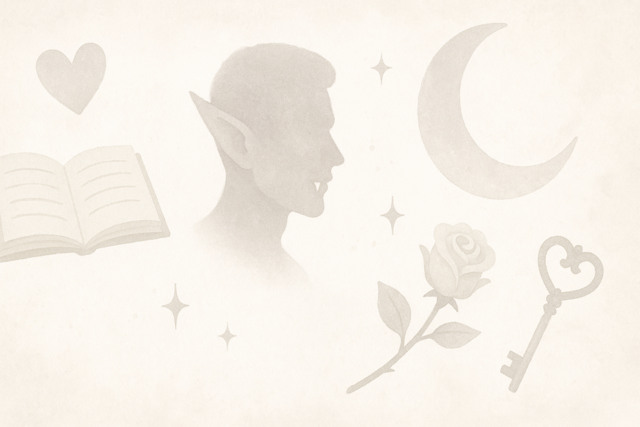Publish or Perish: Getting Ready to Submit Your Novel
But before you address your labels and affix your postage, there are still a few steps you will need to take in order to achieve the best possible results.
A. Step I. Submitting to Agent or Publisher
To begin, we will first look at the common quandary among first-time novelists (as well as some veteran novelists).
Is it better to send your work to potential agents who, in turn, submit it to publishing houses, or to submit directly to publishers?
While there is no right or wrong answer, knowing how the publishing industry works might help influence your decision.
Rumor has it that it may be more difficult to get an agent, than it is to find a publisher. Yet, in a Catch-22 situation, it is said that publishers will not work with writers unless they already have agents.
According to Jeff Herman of the Jeff Herman Agency, "Most publishing houses claim to have policies that prevent them from accepting "unagented" or "unsolicited" manuscripts. Unagented means that the work was not submitted by a represented author. Unsolicited means that the publishing house did not request the submission."
Herman goes on to explain that literary agents, because they have the contacts, act as brokers responsible for bringing buyers and sellers together. Further, the job of the literary agent is to create exposure for his/her client's work and, in doing so, generates exposure by casting the widest net possible.
If, and when, a deal is struck with a publishing house, it is the agent's job to negotiate the deal. Agents work on a commission basis, so it is in their interest to broker lots of high stakes deals.
Herman also points out that writers who have their own publishing contacts, can save the agent's commission fees by representing themselves and negotiating their own contracts -- or may opt to bring in a lawyer at that point.
B. Agent or Self-Representation?
The following is a brief overview of the benefits of using an agent, versus self-representation:
Benefits of using an agent:
- Prestige
- Possesses contacts with particular publishers
- Has inside information as to the types of works particular publishing houses may be seeking
- Alleviates hassles involved in submitting works and following up with potential publishers
- Acts as a buffer between potential publishers and writers
- Provides advice on particular publishing houses, and negotiates contracts
Benefits of self-representation:
- Sidesteps trouble in acquiring an agent
- Saves money by not having to pay an agent's commission
- May make writer appear less threatening, (albeit more vulnerable), to publishers
C. Publishing: Genre Specific
Often times, the choice of whether to shop a manuscript directly to a publisher, rather than invest time in securing a well-connected agent, boils down to the genre of the work.
D. Self-Publishing
Some authors, however, opt to self-publish. While self-publishing alleviates the burden of having to secure an agent, or a publisher, it does present its own share of challenges. For starters, when a writer decides to self-publish, all (and we do mean all) of the publishing steps fall on his/her shoulders, from editing and marketing, to distribution, sales and inventory control.
Outside of the self-publishing route, all other avenues -- except for abandoning the novel altogether -- will require the submission of an enticing package representative of the writer's work.
F. Elements that belong in the submission package:
- Query Letter -- Introduction by the writer to his/her work, and invitation to review the manuscript in its entirety
- Author's Biography -- Overview of the writer, list of his/her previously published works, if any, origins, education, training, and personal/professional connection with writing
- Synopsis -- Brief statement reflecting the nature and overview of the work, character profiles, highlights of special plot points, and climatic scenes.
- Character List -- Although this may be included as part of the synopsis, it is helpful to provide a run-down of the story's main characters, areas of personal development, and plot points.
- Marketing Plan -- For some types of novels, it may be a good idea to include a general promotional strategy outlining unique ways to acquaint the public with the book. Including this type of information shows prospective publishers that there was a specific audience in mind when the book was written.
- Illustrations/Graphics -- Some writers look to hire someone, or use someone they know, to render drawings or other images depicting scenes or ideas represented in the book.
G. Query Letter: critical component
Because the query letter is the writer's calling card and is essentially the only required component of the submission package, we will spend this portion of our discussion focusing on ways to produce the optimal query letter.
A query letter should follow a basic template:
- Lead -- Basically, the writer's hook. Ideally, it should include something about the genre of the material and timeliness: Why is now a good time for a book about XY and Z?
- Supporting material -- Though the writer has stated that this book is important right now, he/she needs to support that statement with cold, hard facts.
- Biography/background information -- Writers need not hold back with regard to speaking of their accomplishments, brilliant educations, and/or endorsements from formidable authorities.
- Conclusion/pitch -- Tailor this section to the specific publisher/agent to whom you are writing. For example, "I have approached Specific Estates because of their reputation for publishing romance novels of only the highest quality."
While the above outline provides the general format for a query letter, some publishers may have such special requests as:
1. Proposed title of the book or booklet
2. Precise number of words in the manuscript
3. Brief synopsis (one or two paragraphs in some cases, one or two pages in others)
4. Self-addressed stamped envelope (SASE) for returning your materials to you
H. Concluding Submission Thoughts
When submitting your work to potential agents and/or publishers, it is best to first do a bit of research on the individual or company to ensure your work is in line with that which they are seeking. Jeff Herman's Guide to Publishers, Editors and Literary Agents is an excellent resource for writers in search of appropriate outlets for their work.
While grammar and punctuation are more clear-cut in their rules and function, authors' writing styles, and their use of literary techniques, tend to be much more subjective.
Therefore, a slightly different review process than the one is needed to weed out prose that does not come across as smoothly, or as clearly, as originally intended.
A. Clutter Removal
When reviewing a completed manuscript, writers should keep an eye out for sections of their work containing excess amounts of "clutter."
- Unnecessary (and distracting) descriptors leading into or out of quotations, e.g., "He boldly exclaimed," or "She enthusiastically replied."
- Unwarranted repetition of words or phrases, e.g., "According to history books, the dinosaur is a pre-historic creature that historically roamed the earth years millions of years ago." Instead, try this: "According to history books, the dinosaur is an ancient creature that roamed the earth millions of years ago."
- Excess adverbs, e.g., "The swan gently, beautifully, and slowly floated on top of the water." If you find yourself using too many adverbs, a good exercise would be to spend time either reworking the sentence to eliminate excess adverbs, or come up with one or two adverbs that are more specific to the idea you are trying to get across to your readers, e.g., "The beautiful (now used an adjective) swan languidly (used in place of both gently and slowly) floated on top of the water."
- Excess adjectives, e.g., "The flashy, fast, bright red sports car could go up to 120 m.p.h. on the open road." Instead, try this: "The flashy, red sports car could go up to 120 m.p.h. on the open road." Note that even though we removed the adjectives "fast" (which is implied by citing the car's speed at 120 m.p.h.), and "bright" (the idea comes across through flashy and red), the meaning of the sentence stays virtually the same, without the added clutter.
- Redundant modifiers -- In the above example, the words "flashy" and "bright" convey nearly the same meaning. Thus, only one, (rather than both), of the descriptive words is needed.
- Futile information, basically taking up space without saying anything of value. Words that carry no weight can easily be eliminated without taking anything away from the overall text.
An example would be: "Wendy, the female police officer, is a strong contender for making detective. A position above beat cop, detectives are responsible for investigating cases, and dress in plain clothes."
The writer can easily remove the following words/phrases: "female," as the name, Wendy, tends to imply the gender; "and dress in plain clothes," as this information bears no relevance to Wendy's possible promotion, nor does it carry the same weight as the other pieces of information. - Non-contributing characters -- On a primary level, only characters who play a contributing role, in terms of either advancing the story, or supporting the actions of the central characters, need to be included within the novel.
On a secondary level, if the novel contains a more macro view of the world, then it may be appropriate to include a larger cross-section of people, as long as their inclusion is directly associated to the core of the story, e.g., Aborigines represent a large group of people; to single out some of their unique characteristics, the writer may opt to profile a select few (even without going on to tell their entire story), in an effort to provide the reader with a more defined sense of the people. - Extensive descriptive passages -- While description and back story can contribute a great deal of rich detail and vivid visual imagery to a story, too much can create a sense of overload and confusion for the reader.
For example, it may be fine to provide a descriptive passage that says, "The brown cow had spent years on the Appleton, Wisconsin farm, producing more milk and offspring than any other."
On the other hand, it would be exhaustive to say: "The brown cow, weighing more than two tons, having spent close to a decade on the farm after coming to the Appleton, Wisconsin Farm from her original birthplace in Springfield, Ill., has become the number one producer of milk -- netting more than $25,000 for the farmers -- and offspring, accounting for four additional calves in the past four years." In comparing to the two examples, it is clear from the second example, how easy it would be to lose the reader in this deluge of information. As a writer, it is far better to present only those pieces of information that are pivotal to the story. - Too didactic -- Writing that is overly instructional or authoritative in tone, can easily cause readers to disengage. This is especially true of fictional stories, in which readers tend to prefer to be swept away in the story, as opposed to being educated or lectured.[ii]
B. Tone/Style Refinement
While the preceding checklist does pertain to the bulk of your writing, a review of the following specific style and tone elements is also important, as it helps shape the overall tone of your work.
- If you notice too many sentences beginning with words such as "there," (e.g., "There once was a little girl"), or "it," (e.g., "It seemed to be the time to celebrate"), you should revise some of the sentences to begin with different words.
- Which reads better from a descriptive and originality standpoint?
"There were 21 Dalmatians in the litter," or "Twenty-one Dalmatians were born as part of the litter." In the second example, the number of puppies leads the sentence, thus allowing the reader to initially focus on the most important element. - Have you fallen into the lazy habit of consistently writing in passive voice, as opposed to active voice? "She was pleasantly struck by the glimmer off the lake," versus "The glimmer off the lake pleasantly took her by surprise."
- Do you write in an overly terse, or overly conversational, manner? In either case, it is helpful to find an effective middle ground, whereby you are able to express and communicate thoughts and ideas in a concise, but not stunted, manner.
- Have you overloaded your story with a ton of narrations? Regardless of whether it is in the form of editorializing, omniscient observations, witty colloquialisms, or simply smug barbs, an avalanche of such injections can occupy too much space, leaving readers without room to form their own opinions and shape their own images.
Within the dialogue, some further checkpoints to review:
- As a writer, it is your job to properly highlight key points in the novel. In retrospect, have you accomplished this task, or do all parts of the story come across as equally as important?
- Does the dialogue come across as natural, as opposed to forced? Would you actually hear this type of language on the street, or does it seem more manufactured for the purpose of the novel?
- Does all of the dialogue serve the purpose of moving the story forward? For example, does each conversation advance the story, either by revealing something new about the plot or the characters, or shedding some light on a new development? If the dialogue does not fulfill any specific need, then how, as the writer, are you able to justify its inclusion in the story?
In going through all of the previously mentioned checkpoints, writers are able to make sure their manuscripts are the best that they can be on all fronts. From grammar and punctuation, to style and dialogue, all elements of the novel need to have a reason for being there and, thus, serve to create a tightly-woven story that both moves and intrigues the reader.



























